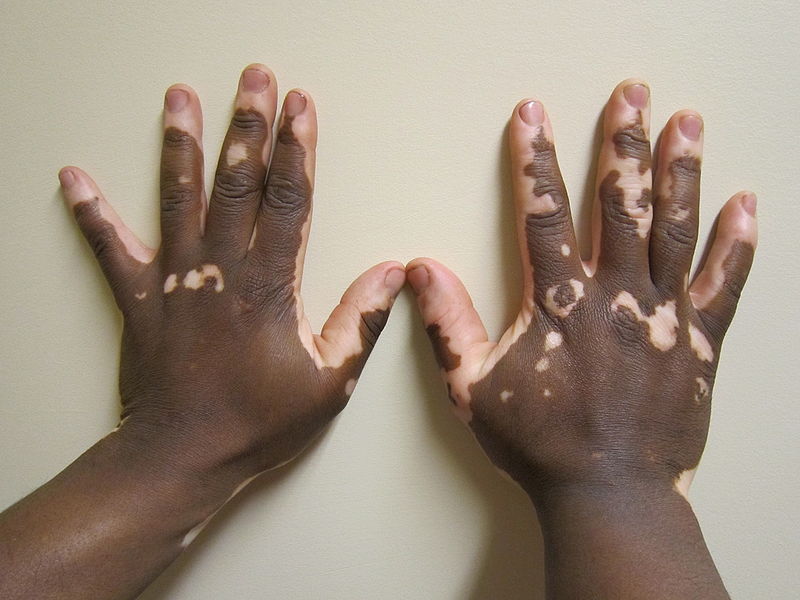Team:Stockholm/Project Idea/Introduction
From 2010.igem.org
(Difference between revisions)
m |
m |
||
| (2 intermediate revisions not shown) | |||
| Line 44: | Line 44: | ||
Our research project uses harmless bacteria that, in fact, are already living in the human body as biological machines. These helpful bacteria are designed in our research project to become cost efficient machines to produce molecules that are deficient in vitiligo skin compared to normal skin. The goal with our project, until November 2010, is to obtain a “proof-of-concept” by having our bacteria produce and secrete molecules that we know, through previous research, are in a deficit in vitiligo skin. The lack of these specific molecules is thought to be involved in the impaired and disappeared pigment cells in vitiligo affected skin areas, leading to white spots. | Our research project uses harmless bacteria that, in fact, are already living in the human body as biological machines. These helpful bacteria are designed in our research project to become cost efficient machines to produce molecules that are deficient in vitiligo skin compared to normal skin. The goal with our project, until November 2010, is to obtain a “proof-of-concept” by having our bacteria produce and secrete molecules that we know, through previous research, are in a deficit in vitiligo skin. The lack of these specific molecules is thought to be involved in the impaired and disappeared pigment cells in vitiligo affected skin areas, leading to white spots. | ||
| - | Currently, there are not any treatments like ours for vitiligo skin. Our idea is to develop a treatment for vitiligo skin, where an ointment with harmless bacteria is to be produced for applying on white patched skin. The bacteria will synthesize and secrete several molecules of interest | + | Currently, there are not any treatments like ours for vitiligo skin. Our idea is to develop a treatment for vitiligo skin, where an ointment with harmless bacteria is to be produced for applying on white patched skin. The bacteria will synthesize and secrete several molecules of interest, which will then target specific inner skin cells with the aim of repigmentation. |
| + | |||
| + | One problem with this type of treatment is that the skin epidermis functions as a very efficient barrier against larger molecules. To help our potentially beneficial molecules reach their destination, we will therefore fuse them to special carrier molecules called cell-penetrating peptides (CPPs). As the name suggests, CPPs are small molecules that have the ability of penetrating into cells, but can in some cases also overcome the skin barrier. By fusing our molecules to such CPPs, we can let them hitch-hike over the skin barrier to the target area. | ||
With our research we aim to in the future develop a treatment that works faster and more efficient in achieving a repigmentation on affected skin areas compared to current medicine. | With our research we aim to in the future develop a treatment that works faster and more efficient in achieving a repigmentation on affected skin areas compared to current medicine. | ||
| Line 59: | Line 61: | ||
---- | ---- | ||
| - | To read more about the "special carrier molecules", also known as '''cell-penetrating peptides | + | To read more about the "special carrier molecules", also known as '''cell-penetrating peptides''': |
* Happy birthday cell penetrating peptides: Already 20years, Brasseur R, Divita G, Biochim Biophys Acta, 2010 (and references within) | * Happy birthday cell penetrating peptides: Already 20years, Brasseur R, Divita G, Biochim Biophys Acta, 2010 (and references within) | ||
Latest revision as of 01:20, 28 October 2010
 |

|
 |

|
 |

|

|

|
 "
"



